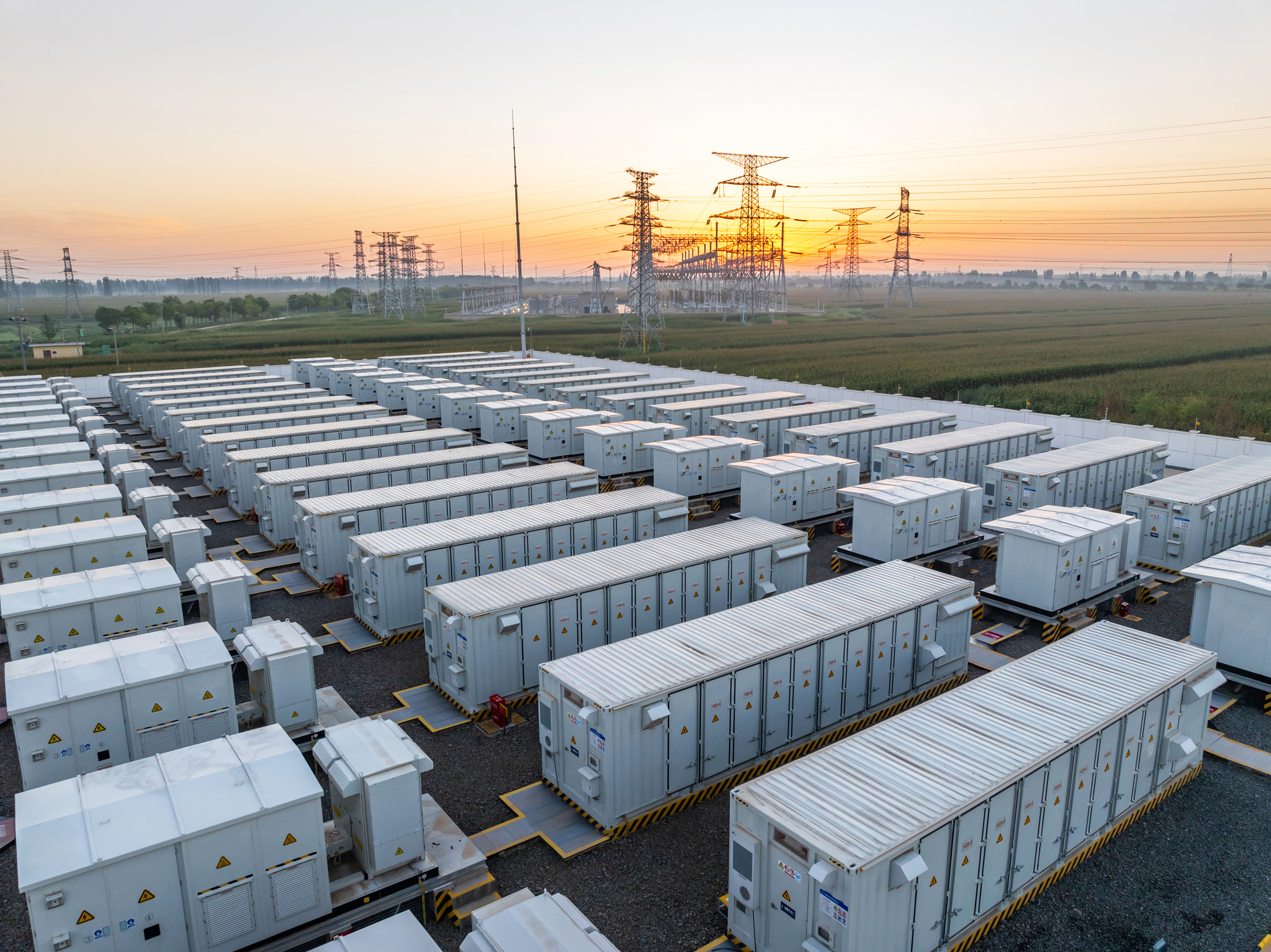U.S. electric utilities are facing an unprecedented rise in electric demand, driven in part by supply chain issues, the increased development and deployment of AI and data centers, electrification, and shifts in national energy policy. For example, a recent resolution was signed rolling back energy efficiency standards on appliances, which will, in turn, increase energy demand as appliances without these mitigations are adopted in the market. With material goods shortages and steep tariffs on renewable energy exports, electric utilities are challenged to meet demand with fewer resources. Fortunately, behind-the-meter distributed energy resources (DERs) provide opportunities for utilities to leverage these devices for use in demand flexibility programs like virtual power plants, demand response, and EV charging.
The best part: these devices are already in your communities just waiting to be included in your customer programs.
Costs of Upgrading the Grid
Not quite two years ago, the projected total cost to upgrade the U.S. electric grid ran over $2.5t by 2035. Since then, costs have risen to parallel increases in demand, as well as the growing volume of damaging extreme weather events. In fact, analysts say climate change incurred damage costs around $16m per hour globally, a staggering figure that only promises to grow. These costs and challenges further complicate upgrading the grid to meet demand, creating a long-term, circular problem. For perspective, in 2023, U.S. utilities spent a combined $78.6 billion on transmission and distribution infrastructure costs, which include replacing aging equipment, modernizing existing assets for resiliency measures, and installing new lines and transformers.
How Supply Chain Issues Challenge This
In addition to the already high costs mentioned, supply chain issues will further complicate meeting rising demand. Already, transformer shortages have loomed over the American electric grid, with wait times that can take up to three years to receive. The supply chain is further challenged by tariffs, specifically tariffs imposed upon renewable energy technologies like solar and battery energy storage systems, which are already fostering market uncertainty in the industry. Additionally, tariffs have caused tension between neighboring energy markets that can further impact regional U.S. electric demand. While these same pressures are present for distributed energy resources (DERs), many U.S. consumers already have behind-the-meter DER assets to leverage through a Grid-Edge distributed energy resource management system (DERMS) to use in demand flexibility programs.
More Virtual Power Plant Capacity Is Needed
According to the Department of Energy (DOE), the U.S. needs between an 80-160 GW increase in virtual power plant capacity, which is about 10-20% of peak load, by 2030 to meet rising demand. For context, as of 2023, the U.S. produced around 30-60 GW of virtual power plant capacity, primarily attributable to demand response programs. By leveraging distributed energy resources (DERs), virtual power plants can improve grid resiliency and defray high peak energy market purchases by shifting power to off-peak usage periods. In fact, a new law in the state of Virginia—the start of more to come—requires Virginia utilities to propose virtual power plant pilots to state regulators by December, paving the way for increased energy resiliency.
Types of Demand Flexibility Programs & Their Benefits
Demand flexibility programs have existed for more than four decades, dating back to the mid-70s. The earliest demand flexibility program is demand response, a strategy that shifts load to off-peak hours of usage as a conservation tactic. The earliest programs operated relied upon radio switches to enact device control, with switches typically attached to devices like HVACs. With the Internet of Things, device control has become comparably easy, especially with the proliferation of WiFi and Broadband. Now, modern DERMS can aggregate an array of distributed energy resources like solar, battery energy storage systems, electric vehicles (EVs) and EVSE chargers, and smart devices like thermostats and water heaters.
Because these programs minimize usage and shift load, they defray high peak energy market costs while improving grid resiliency. This, in turn, lowers the slowly increasing energy bills, causing growing concern to customers; as a customer priority, helping decrease rates while improving grid resiliency is a net positive for utilities. Now, let’s look at the demand flexibility options that distributed energy resources provide.
Virtual Power Plants
The DOE report demonstrates one simple concept fresh to the industry: virtual power plants represent any aggregation of otherwise disparate DER assets for use in load management strategies. For example, virtual power plants can function as an aggregation of communally generated solar power by managing solar inverters and batteries to redistribute energy to repower the grid during peak periods of demand. Likewise, virtual power plants can function as an aggregate conservation program that shifts energy usage to off-period hours of usage to avoid high energy market costs and minimize demand across the system. Altogether, virtual power plants can rely on any distributed energy resource, meaning that the opportunity for leveraging VPPs for load shift is high, growing to parallel DER market penetration and demand increases: VPPs leverage the pre-existing DERs already in a community.
Demand Response
Simply put, demand response is a widespread conservation strategy that calls upon customers to minimize usage during peak periods of demand. Demand response programs often leverage smart thermostats and water heaters. Last year, research indicates that more than 16% of U.S. homes that have the internet have smart thermostats, a number that promises to grow. Likewise, the smart water heater market is equally robust, providing a secondary opportunity for demand response programs.
Irrespective of how demand response is run, as of 2022, more than 10 million customers were enrolled in residential demand response programs, yielding more than one terawatt of aggregate savings. Demand response is time-tested and trusted within the industry, such that it remains useful with increases in technology. For example, FERC recently issued a ruling expanding demand response windows to allow for a broader regulatory application of the strategy; demand response is and continues to prove useful in defraying high peak energy bills, while enhancing grid resiliency and minimizing the need for expensive grid upgrades.
EV Charging
As a distributed energy resource, electric vehicles provide many paths to meeting demand. Similar to demand response, EV charging minimizes electric demand by shifting charging times to off-peak periods of demand. While the EV market has slowed, EV production is still slowly increasing in the U.S., with newer, more affordable models increasingly common. EV charging efforts may also include V2G charging initiatives, which redirect stored battery charges from electric vehicles back into the grid. Likewise, EV telematics offers a granular look at the device data necessary to inform forecasting efforts to help utilities better plan for their upcoming needs.
TDC: Getting More From Less
The backbone of any demand flexibility program, not all DERMS are created the same. A grid DERMS aggregates utility-held distributed energy resources (DER) like solar or battery installations. Grid DERMS are often part of the operations side of a utility, as they are a dependable resource for utility operators who know what their devices are capable of and can rely on them to function at their discretion.
By contrast, a Grid-Edge DERMS manages behind-the-meter DERs that are found in places like residential, commercial, and industrial facilities, or rather, at the edge of the grid. While behind-the-meter DER management provides useful vectors for load management, customer opt-in/out rates and attrition over event windows can yield unreliable outcomes.
– Syd Bishop, Sr. Content Specialist, Virtual Peaker
Topline Demand Control solves for this challenge by optimizing behind-the-meter distributed energy resources at a granular level to ensure a reliable outcome every time. Topline Demand Control combines AI, model predictive control, a Grid-Edge DERMS, and forecasting software to ensure a desired outcome for grid operators, removing uncertainty from grid ops. As opposed to modern event calling, which relies on factors like customer participation throughout an event, Topline Demand Control provides a reliable energy outcome every time.
Conclusion: How BTM Distributed Energy Resources (DER) Defrays New Construction Costs
Unfortunately, there is no universal solution to meeting rapidly growing demand. Building new power plants is not only costly and time-consuming, but requires an extraordinary amount of resources to accomplish. Fortunately, behind-the-meter distributed energy resources (DERs) provide an opportunity to meet demand and defray high peak energy costs, while simultaneously enhancing grid resiliency. Still, no matter what type, building new power plants is exorbitantly expensive, but don’t take our word for it. Download our Direct Comparison Guide: Launching a VPP versus Building a New Power Plant below for more information!





